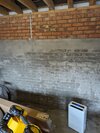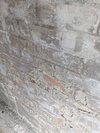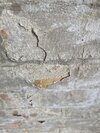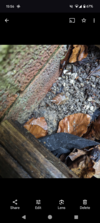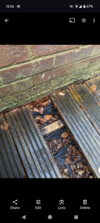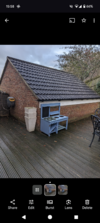I have a garage that is built into the earth on 3 sides, ever since I have moved into my house I have had issues with damp and mold in the garage and so I decided to try tanking to prevent water ingress through the walls.
I used Febtank Tanking Slurry and this appears to have dried well on 1 wall however the other 2 walls have still not dried out (after over a month) and now on those walls it appears like the tanking is cracking and falling off (pictures attached). I do not know why this hasn't worked and was wondering if anyone could give and advice on this or how to fix this?
I used Febtank Tanking Slurry and this appears to have dried well on 1 wall however the other 2 walls have still not dried out (after over a month) and now on those walls it appears like the tanking is cracking and falling off (pictures attached). I do not know why this hasn't worked and was wondering if anyone could give and advice on this or how to fix this?


